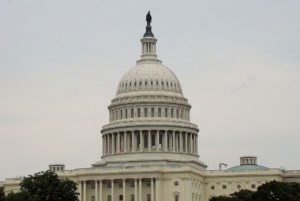 The U.S. House of Representatives has passed the “Moving Forward Act” (HR 2), a $1.5 trillion infrastructure funding bill that includes $8.8 billion for a new “broadband benefit” program to help low-income households and recently laid-off consumers pay for internet connections, as well as $1.3 billion in funding for state and community digital inclusion initiatives.
The U.S. House of Representatives has passed the “Moving Forward Act” (HR 2), a $1.5 trillion infrastructure funding bill that includes $8.8 billion for a new “broadband benefit” program to help low-income households and recently laid-off consumers pay for internet connections, as well as $1.3 billion in funding for state and community digital inclusion initiatives.
NDIA Executive Director Angela Siefer enthusiastically welcomed the House vote. “This is an historic moment for digital inclusion practitioners and advocates, as well as for millions of urban and rural Americans who remain excluded from mainstream digital connection,” Siefer commented. “As we said when the broadband provisions of this legislation were made public last week, Congressional leaders are finally addressing all the causes of the persistent digital divide affecting communities of all kinds – big cities, small towns, suburban as well as rural areas. HR 2 would invest heavily to bring broadband fiber infrastructure to any community where it’s needed, including urban as well as rural neighborhoods, working with all kinds of providers — not just big incumbents. At the same time, it proposes major support for broadband affordability and adoption — creating a federal broadband benefit to make internet service affordable to everyone, providing more than a billion dollars to help states and communities fund digital inclusion initiatives, and requiring the FCC and providers to make the price of home broadband service transparent and public. This is the comprehensive approach to digital equity that our country needs.”
HR 2, approved by a 233-188 vote cast along mostly party lines, incorporates all the provisions of the $100 billion “Accessible, Affordable Internet for All Act”, introduced on June 24 by South Carolina Congressman James Clyburn and more than two dozen colleagues. Those provisions include:
- $8.8 billion for a new “broadband benefit” program that would reimburse internet providers for discounts provided to low-income households (eligible for Lifeline, qualified for federal school lunch subsidies, or receiving Pell Grants) and consumers who are recently unemployed. Bills for normal home internet service could be subsidized as much as $50 a month ($75 for households on tribal lands.)
- $1.3 billion over five years for state and community digital inclusion initiatives. These include the State Digital Equity Capacity Program, an annual grant program for states to create and implement comprehensive digital equity plans to help close gaps in broadband adoption and digital skill; and the Digital Equity Competitive Grant Program to further support these efforts through digital inclusion projects undertaken by local communities. (This is mostly the contents of the Digital Equity Act.)
- $85 billion in grant and loan funding for broadband infrastructure deployments that bring at least 100/100 Mbps access to areas where those speeds are unavailable. Funded projects must offer affordable rate tiers.
- $5 billion to support local schools’ efforts to invest in home connectivity for students and staff.
- Federal protection against state restrictions for communities seeking to build their own broadband networks.
- A requirement for the FCC to start collecting and publishing residential internet price information from all broadband providers.
HR 2 will now go to the Senate, where Senator Amy Klobuchar of Minnesota and eight co-sponsors introduced a Senate version of the “Accessible, Affordable Internet for All Act” earlier today.
